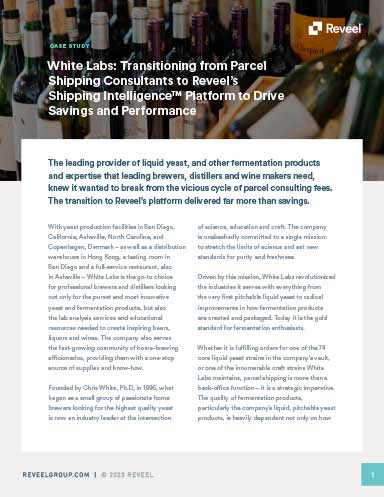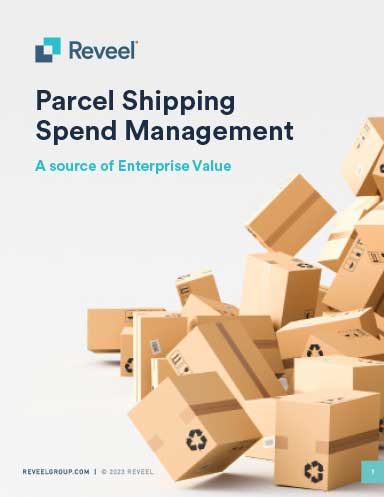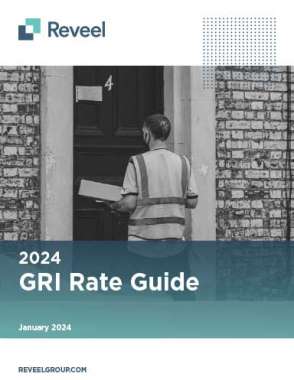Proactively Managing Shipping Agreements Year-Round
The industry's most skilled shippers are those who have effectively converted the routine task of planning shipping expenses into a proactive endeavor.
For any business that relies on parcel shipping, costs can easily spiral out of control if not given enough forethought and attention. Courier delivery services often up their rates with a general rate increase (GRI) and hard-to-find charges. Businesses need to vigilantly evaluate these changes relative to their own unique shipping profile to be able to accurately budget for the coming year.
Many still believe that they only have to think about their parcel shipping contracts once a year. It pays to actively keep watch of your contract and compare results throughout the year so that adjustments can be made as needed to ensure you’re getting the biggest bang for your buck.
Pursuing Proactiveness
The most adept industry shippers are those that have successfully transformed the annual chore of planning and negotiating shipping costs into a proactive activity. But how can they do this without creating another thankless task? How can they ensure these efforts provide a solid return on investment?
After years in the industry, I can say that several successful strategies can be succinctly encapsulated into four actions: plan, measure, optimize and monitor.
Step 1: Plan
Effective spending management begins with meticulous strategizing. Leverage data at this juncture, including projections, product line profitability and consumer purchasing trends, to make data-driven decisions. In this day and age, making critical, business-impacting decisions without data is a fast track to poor projections and missed quarterly numbers.
Essential questions to ask include:
- How much should we allocate for parcel spending given annual rate hikes?
- Is opting for a multicarrier solution a judicious choice for our business?
- Should we utilize a third-party logistics provider’s rates or operate under our negotiated agreement?
- Should our approach prioritize swiftness of delivery or affordability?
- Do we extend free shipping, make it complimentary beyond a particular order magnitude or pass on shipping expenses to our clientele?
- Which product lines yield the highest profitability, and which ones merit contemplation for discontinuation?
- Would establishing a new distribution center yield cost reductions and, if so, where should it be?
- Would dedicating time and resources to alter our product packaging justify the expense by reducing our costs?
- Could zone skipping prove advantageous?
Step 2: Measure
Measurement is essential to evaluate the success of your plan. Define key performance indicators (KPIs) aligned with industry benchmarks, including customer satisfaction, cost, delivery speed and goal achievement. They need to be reviewed consistently to gain a real-time understanding of your situation.
Common KPIs are:
- Service Expenditure: This is the aggregate a shipper allocates to shipping, encompassing discounts, surcharges and other costs. Analyzing overheads enables shippers to analyze same-day versus ground shipping offerings and the competitiveness of discounts.
- Average Shipment Cost: This is the genuine cost of each shipment, encompassing weight, shipping zone considerations and surcharges. A precise understanding provides a more accurate baseline for forecasting costs, enabling informed operational decisions.
- Surcharge Costs: While some surcharges are anticipated (like those on oversized packages), others can be unexpected, such as those during peak seasons or for deliveries to sparsely populated regions. In fact, surcharges can make up 20% to 40% of a shipper’s annual parcel spend.
- Weight Categorization: This comprises the average weight and percentage of packages falling into the dimensional (DIM) weight category, a fee typically applied to voluminous yet lightweight parcels. Carriers charge based on either the actual weight or the DIM weight, whichever is greater. If your shipments mainly comprise heavy items, advocating for a lower DIM divisor instead of hefty oversized surcharges becomes prudent.
- Average Shipping Zone: You’d anticipate that shipping to farther destinations would be more taxing on the carrier and subsequently pricier for your enterprise. Acquainting yourself with your most traversed shipping zones aids in financial planning and offers insights for potential business expansions.
- Minimum Charges: Minimums represent the lowest amount a shipping carrier charges a company per shipment, regardless of variables. Hence, irrespective of how efficient your shipping processes are or how adroitly you negotiate discounts, costs won’t diminish further than this number. A high percentage of shipments hitting the minimum signals the necessity for a closer examination of this figure.
Step 3: Optimize
Enhancing carrier agreements can prove daunting given their intricate nature, brimming with stipulations, requirements and difficult-to-read legalese. Adept shippers utilize data and peer comparisons to refine discounts and assess proposals from various carriers.
One common rule to remember is to “follow the money.” In this context, that means paying close attention to what services you’re spending the most on. To optimize this, you’ll want to understand where there are opportunities to work with your carrier and where improvements can be made. Negotiate prices in the areas that will make an actual difference; don’t let carriers distract you with discounts you don’t need.
Contemporary data science technologies can also help expedite this process, eliminating time-consuming manual work and enabling a genuine comparison of pumpkins to pumpkins. A digital replica of carrier agreements and outcomes can be simulated, permitting shippers to assess the actual impact of each proposal before signing.
Step 4: Monitor
The business landscape is dynamic and ceaselessly evolving. Regularly monitor parcel spending to identify patterns and any anomalies. For instance, analytics might uncover an upswing in the average shipment cost or a high percentage of shipments incurring the minimum charge. Keep an eye out for expiring discounts, performance discrepancies and instances of fraud.
Wrapping Up
Those who contend that shipping agreements merit consideration only once a year are unequivocally mistaken. Successful shippers adhere to a repeatable methodology and set of best practices that incorporate strategic planning, meticulous measurement, comprehensive optimization and ongoing monitoring. By embracing these, shippers can make informed decisions that are backed by data, streamline their cost structure and enhance services.
Article Topics
Reveel News & Resources
Direct-to-Consumer Beverage Distributor Optimizes Fulfillment Operations How A National DTC Beverage Distributor Increased Savings With Active Shipping Management The Crucial Importance of SOC 2 Certification in Today’s Digital Landscape GRI Impact Analysis – Parcel Spend Management 1.0 vs. 2.0 Reveel’s Shipping Intelligence Platform Transforms MFCP’s Shipping Operations Ship Your Yoga Essentials Effortlessly with Reveel’s Shipping Solutions Negotiate Your UPS Carrier Agreement Immediately More ReveelLatest in Supply Chain
Ranking the World’s 10 Biggest Supply Chains The Top 10 Risks Facing Supply Chain Professionals Walmart’s Latest Service: Ultra Late-Night Delivery DHL Supply Chain Appoints New CEO Amidst Leadership Changes Dollar Tree’s Oklahoma Distribution Center Decimated by Tornado City of Baltimore Files Lawsuit to Recoup Money for Collapsed Bridge The Era of Self-Driving Tractor-Trailers Set to Begin More Supply Chain















